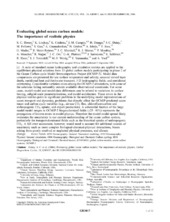Evaluating Global Ocean Carbon Models: The Importance of Realistic Physics
| dc.contributor.author | Doney, S. C. | eng |
| dc.contributor.author | Lindsay, K. | eng |
| dc.contributor.author | Caldeira, Ken | eng |
| dc.contributor.author | Campin, J. M. | eng |
| dc.contributor.author | Drange, Helge | eng |
| dc.contributor.author | Dutay, J. C. | eng |
| dc.contributor.author | Follows, M. | eng |
| dc.contributor.author | Gao, Yongqi | eng |
| dc.contributor.author | Gnanadesikan, A. | eng |
| dc.contributor.author | Gruber, N. | eng |
| dc.contributor.author | Ishida, A. | eng |
| dc.contributor.author | Joos, Fortunat | eng |
| dc.contributor.author | Madec, G. | eng |
| dc.contributor.author | Maier-Reimer, E. | eng |
| dc.contributor.author | Marshall, J. C. | eng |
| dc.contributor.author | Matear, R. J. | eng |
| dc.contributor.author | Monfray, P. | eng |
| dc.contributor.author | Mouchet, A. | eng |
| dc.contributor.author | Najjar, R. | eng |
| dc.contributor.author | Orr, J. C. | eng |
| dc.contributor.author | Plattner, G. K. | eng |
| dc.contributor.author | Sarmiento, J. L. | eng |
| dc.contributor.author | Schlitzer, R. | eng |
| dc.contributor.author | Slater, R. | eng |
| dc.contributor.author | Totterdell, I. J. | eng |
| dc.contributor.author | Weirig, M. F. | eng |
| dc.contributor.author | Yamanaka, Y. | eng |
| dc.contributor.author | Yool, A. | eng |
| dc.date.accessioned | 2005-02-11T08:46:13Z | |
| dc.date.available | 2005-02-11T08:46:13Z | |
| dc.date.issued | 2004-09-15 | eng |
| dc.Published | Global Biogeochemical Cycles 2004 18, GB3017 | en |
| dc.identifier.issn | 0886-6236 | |
| dc.identifier.uri | http://hdl.handle.net/1956/622 | |
| dc.description | An edited version of this paper was published by AGU. Copyright 2004 American Geophysical Union. | |
| dc.description.abstract | A suite of standard ocean hydrographic and circulation metrics are applied to the equilibrium physical solutions from 13 global carbon models participating in phase 2 of the Ocean Carbon-cycle Model Intercomparison Project (OCMIP-2). Model-data comparisons are presented for sea surface temperature and salinity, seasonal mixed layer depth, meridional heat and freshwater transport, 3-D hydrographic fields, and meridional overturning. Considerable variation exists among the OCMIP-2 simulations, with some of the solutions falling noticeably outside available observational constraints. For some cases, model-model and model-data differences can be related to variations in surface forcing, subgrid-scale parameterizations, and model architecture. These errors in the physical metrics point to significant problems in the underlying model representations of ocean transport and dynamics, problems that directly affect the OCMIP predicted ocean tracer and carbon cycle variables (e.g., air-sea CO2 flux, chlorofluorocarbon and anthropogenic CO2 uptake, and export production). A substantial fraction of the large model-model ranges in OCMIP-2 biogeochemical fields (±25–40%) represents the propagation of known errors in model physics. Therefore the model-model spread likely overstates the uncertainty in our current understanding of the ocean carbon system, particularly for transport-dominated fields such as the historical uptake of anthropogenic CO2. A full error assessment, however, would need to account for additional sources of uncertainty such as more complex biological-chemical-physical interactions, biases arising from poorly resolved or neglected physical processes, and climate change. | en_US |
| dc.format.extent | 2804013 bytes | eng |
| dc.format.mimetype | application/pdf | eng |
| dc.language.iso | eng | eng |
| dc.publisher | American Geophysical Union | eng |
| dc.subject | Oceanography | eng |
| dc.title | Evaluating Global Ocean Carbon Models: The Importance of Realistic Physics | eng |
| dc.type | Peer reviewed | en_US |
| dc.type | Journal article | en_US |
| dc.identifier.doi | https://doi.org/10.1029/2003gb002150 |
